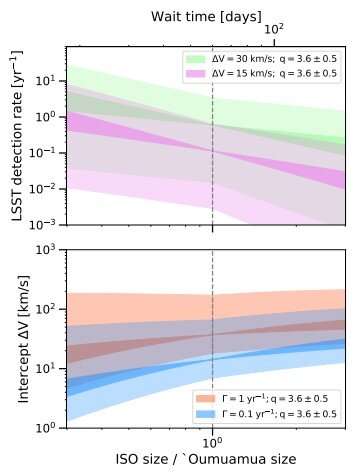November 9, 2022 report
Outlining the requirements for a rendezvous mission with an interstellar visitor

A team of researchers from Harvard University, the Space Telescope Science Institute, the Harvard-Smithsonian Center for Astrophysics and Wellesley College have outlined the likely requirements to rendezvous with the next interstellar visitor. Their paper is posted on the arXiv preprint server.
In 2017, an object appeared in the solar system that had come from somewhere else in space. The object was the first interstellar object ever spotted traveling through the solar system. Known as 'Oumuamua, the object had a cigar shape and underwent a still unexplained acceleration as it left the solar system. Some have suggested 'Oumuamua may have been a space probe created by distant aliens. Others have suggested it was likely a fragment of a larger object.
In either case, observers began debating the issue of whether space agencies such as NASA should make plans for studying such an object if another should appear. In this new effort, the researchers studied the circumstances surrounding the appearance and departure of 'Oumuamua and also that of other solar bodies such as asteroids or comets. They also looked at existing projects such as the ESP's Comet Interceptor. They then developed a list of needs should a project be developed to create a probe capable of intercepting an interstellar visitor.
The researchers began with the assumption that such a mission would be based on research, not destruction. And that such research would entail taking photographs and using devices to learn more about the makeup of such an object. Because of that, they note, a probe would have to be built with such capabilities. They further suggest it would require a spectrometer sensitive to the wavelength range of 0.4 to 2.5 µm to discriminate between natural and artificially created materials.
The researchers also note that due to an unknown time constraint, it would make sense to station a probe out in space rather than try to launch something quickly—perhaps in the same region as the James Webb telescope. It would also need to have, among other abilities, maneuverability, they further note, allowing it to move closer to an object under study when needed.
More information: Amir Siraj et al, Physical Considerations for an Intercept Mission to a 1I/'Oumuamua-like Interstellar Object, arXiv (2022). DOI: 10.48550/arxiv.2211.02120
Journal information: arXiv
© 2022 Science X Network



















